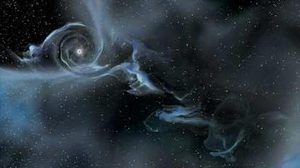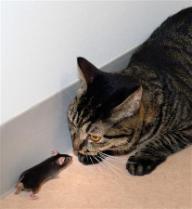The ultra-high-energy particles appear to originate at the centers of some galaxies, researchers sayAn international team of scientists said Thursday that they have tracked down the origin of the mysterious "Oh-My-God" particle -- a cosmic ray bearing energies millions of times larger than the most powerful particle accelerator can produce on Earth.

|
| ©HO/AFP/Getty Images
|
| Astronomers have discovered the biggest black hole orbiting a star 1.8 million light-years from Earth in the constellation Cassiopeia, with a record-setting mass of 24 to 33 times that of our Sun
|
Researchers at the Pierre Auger Observatory, a complex of detectors spread over a Rhode Island-sized slice of the South American prairie, said the most likely source for these ultra-high-energy particles is a type of black hole found at the center of some galaxies.
These violent phenomena are called active galactic nuclei because they both gobble up energy from the surrounding space and spit some out with tremendous force.
"This is a fundamental discovery. We have taken a big step forward in solving the mystery of the nature and origin of the highest-energy cosmic rays," said Nobel laureate James Cronin, a professor emeritus at the University of Chicago and coauthor of the paper published in the current issue of the journal Science.

Comment: This experiment recreates similar characteristics to those seen in fearless rats infected with the brain parasite Toxoplasma Gondii. It's estimated that that up to 40 percent of the world's population could be infected with the parasite.